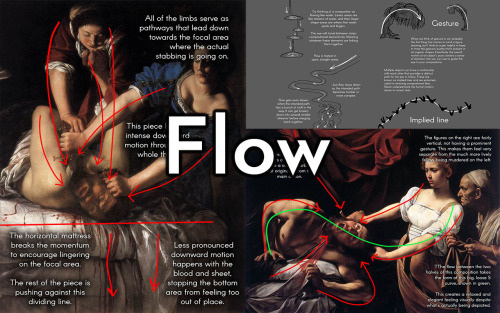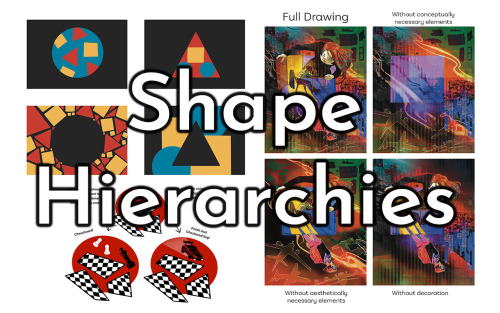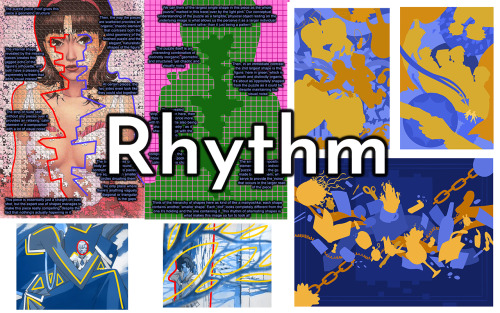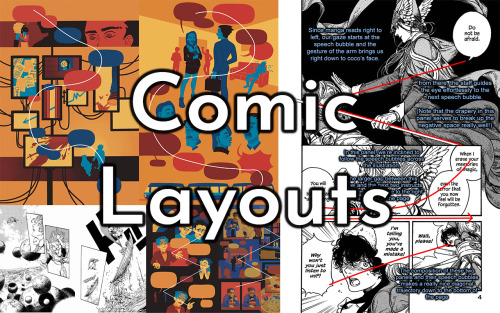That's It For Now But If You Want A More Detailed Step By Step Process Just Ask ^^☆
HOW DO YOU SHADE THE GOLD PARTSS???? PSLSPSLPSLPSLS

You don't have to take my word as gospel but these are the things I found that work well: ♡
(Please excuse grammatical errors I wrote this with a headache-...)
In my personal experience and process with gold, I find that these few things help me a lot when tackling it:
-whenever you approach gold it's important to asses the medium in which the material presents itself. The two options are the metal itself and any type of golden fabric.
-the shading process for me begins right from the sketch, when mapping out the gold accessory, object or the accent on a piece of clothing I try to get the shape of it to make sense.


It's most important, with golden fabric, to know and imagine how it falls arround and wraps arround a silhouette or body parts, if you want to figure out shading.
-So, when we speak "golden clothing" it revolves arround very sharp shadows, lights and reflections mainly becouse of fabric wrinkles. Golden clothing is pretty easy once you understand the nature of your material-☆
And the rules apply to any other colour!


Original Yellow hue
♡Same rules apply♡
So if you want you can structure your lights and shadows in black, white and grey! It works well to start off if you're not confident with colours as gold can be tricky in that regard...
GREYSCALE- can help you better understand the intensity of lights and shadows in contrast with one another:

You can then focus on colour later after you set up your values.

You'll notice with gold pieces that are much less clothing and much more metal the shadows alter from soft to sharp depending on the physical structure of the object itself.
If you encounter smooth curves it's soft, when it's sudden cuts or edges it's sharp.
Important to keep in mind:
-Gold is a metal = metals are REFLECTIVE.

Metals will reflect light aswell as colours.
They will especially reflect ☆colorful lights.☆
You must always, always, know where the light source is, and how it hits the object/ material.
That's it for now but if you want a more detailed step by step process just ask ^^☆
-Nix🌙
More Posts from Donutdomain and Others
Your writing will always feel awkward to you, because you wrote it.
Your plot twists will always feel predictable, because you created them.
Your stories will always feel a bit boring to you, because you read them a million times.
They won't feel like that for your reader.

IC 342: Hidden Galaxy
"IC 342 is a challenging cosmic target. Although it is bright, the galaxy sits near the equator of the Milky Way’s galactic disk, where the sky is thick with glowing cosmic gas, bright stars, and dark, obscuring dust. In order for astronomers to see the intricate spiral structure of IC 342, they must gaze through a large amount of material contained within our own galaxy — no easy feat! As a result IC 342 is relatively difficult to spot and image, giving rise to its intriguing nickname: the “Hidden Galaxy.” Located very close (in astronomical terms) to the Milky Way, this sweeping spiral galaxy would be among the brightest in the sky were it not for its dust-obscured location. The galaxy is very active, as indicated by the range of colors visible in this NASA/ESA Hubble Space Telescope image, depicting the very central region of the galaxy. A beautiful mixture of hot, blue star-forming regions, redder, cooler regions of gas, and dark lanes of opaque dust can be seen, all swirling together around a bright core. In 2003, astronomers confirmed this core to be a specific type of central region known as an HII nucleus — a name that indicates the presence of ionized hydrogen — that is likely to be creating many hot new stars."
Image and information from NASA.



Part 2 of cino art tips is some basic tips on shape and silhouette design which are also principles I think about a lot :)
(also i'm so sorry i chose comic sans to write this in idk what i was thinking but i already flattened the layers)
i don't have any other obvious tips off the top of my head rn but feel free to ask anything you are curious about! i love getting asks uwu
i learned about Tim Wong who successfully and singlehandedly repopulated the rare California Pipevine Swallowtail butterfly in San Francisco. In the past few years, he’s cultivated more than 200 pipevine plants (their only food source) and gives thousands of caterpillars to his local Botanical Garden (x)






Hello everyone! after a couple of months of work on this beast of a thing, the first draft of my promised writeup on understanding composition is finally ready! This badboy is almost 15,000 words, and over 150 pages long. In these images, you can see a couple of examples of the kind of subject matter I’ll be covering, but it’s very comprehensive.
This is currently available on my Patreon starting at just $2!
I think what I offer is a pretty unique take on composition, and it’s geared to be understood without a lot of consideration for the more finnicky technical elements of drawing, so if that’s part of art you have trouble with you might find some answers in my approach. Using my own art and examples from various disciplines and eras, I break down how to understand why a composition does - or doesn’t - work, all building to a toolset that lets you have control over your own compositions with precision and intent.
A sincere thank you to anyone who takes the time to look at it, and at the end of the day, always remember one fundamental rule of art:

a digital artist’s guide to digital art guides
hi my qualification for writing this guide to youtube art tutorials (though it may be applicable to other forms of media as well) is that i have watched over (roughly) 200 art tutorials of various length, artistry, content, style, and more
when we’re told “look up guides online” there’s not really much more to say on how to approach our research and taking them in, so if you’re a little lost in the vast sea of art help like i was as a wee bab, then this may help!
General Use:
don’t feel bad for skipping - if something isn’t striking you as informative or helpful, don’t feel bad for moving right along and treating it like a sponsor
^ also applies for lengthy talking or deriving from the point, if you’re not up for it. you don’t need to sit through the artists’ whole spiel to learn how to draw hands.
if something isn’t making sense, reach out to communities for help, and go beyond youtube/tumblr. reddit and discord servers are also full of places to go to talk to more ppl
trust your gut! if someone’s style makes you go “hmm this feels wrong and objectifying”, it’s because it is - feel free to move right along
^ also applies for if it feels like the artist is just showing off and not explaining enough, or just posting for ego boost or to get coin.
… related tip but if an artist likes to rant about discourse as the primary thing on their channel, i know drama can be fun and juicy but please just avoid these people, because generally they’re either nasty and toxic-minded, or they seem to have some bs going on for them in the background
check out comments and online discussion to see how well received a popular artist is, and pay attention to their discourse to avoid any mistakes they unintentionally or even proudly display
the art program is not important!!! every art program has some level of similar functionality, some with more bells and whistles than others, and very rarely does one program lack a key tool the others don’t have. the hardest part is translating what your artist means when they say one thing but your program has another - but more often than not, some similar wording or like words are used for the same tool or setting.
^ this means you can watch that tutorial on how to draw legs for clip studio if all you have is firealpaca
Information over Entertainment! the best artists to find help in are ones who focus primarily on relaying information and less on colorful quirky editing - those kinds CAN be helpful, but in general i tend to find more useful tips in videos that feel more academic as opposed to more entertaining.
don’t feel bad for flatout ignoring advice. if you found something that works better for you, please use it. feel free to try new techniques as well if you’re feeling stuck or want a change of pace!
Terms and Conditions:
What words should you use when finding the right video? Think like a content creator, here. General words are best when searching for the right video, and in order to think of those words, you need to know the parts of art. Lines, anatomy, colors, values, background, perspective, etc - figure out which part or parts you struggle with, and use one term at a time.
What types of videos are for me? If you are a Fresh Brand New Baby Beginner Artist that doesn’t even know much about art letalone art programs, then stick to tutorials that are labelled “for beginners”. If you know your way around an art program but you’re still pretty new, then your average art tutorial should be most helpful. More entertaining artists should be ok to start with! If you know your way around art but not programs, look for “art program reviews”, then once you’ve picked one or a few to mess around with (though I really recommend one at a time), look for “(program name) intro to / introductory”. And if you are well aware of everything I’ve listed, then you’ll be needing “intermediary / intermediate” tutorials. These ones are best given by master artists who focus on academic presentation. If you’re a master, you don’t even need this tumblr post wyd 😂
-
 rowtheboatt liked this · 1 year ago
rowtheboatt liked this · 1 year ago -
 morcalilisdoors liked this · 1 year ago
morcalilisdoors liked this · 1 year ago -
 fillthelighter liked this · 1 year ago
fillthelighter liked this · 1 year ago -
 thebeigeoverlord liked this · 1 year ago
thebeigeoverlord liked this · 1 year ago -
 lordlevian liked this · 2 years ago
lordlevian liked this · 2 years ago -
 trainsreblogblog reblogged this · 2 years ago
trainsreblogblog reblogged this · 2 years ago -
 redmarvel liked this · 2 years ago
redmarvel liked this · 2 years ago -
 ffloralium liked this · 2 years ago
ffloralium liked this · 2 years ago -
 phil-likes-art reblogged this · 2 years ago
phil-likes-art reblogged this · 2 years ago -
 phil-de-fer liked this · 2 years ago
phil-de-fer liked this · 2 years ago -
 jackross-v liked this · 2 years ago
jackross-v liked this · 2 years ago -
 roborocket liked this · 2 years ago
roborocket liked this · 2 years ago -
 prussianvenom liked this · 2 years ago
prussianvenom liked this · 2 years ago -
 savyir-genesizz-the-wizard reblogged this · 2 years ago
savyir-genesizz-the-wizard reblogged this · 2 years ago -
 smiling-sketch liked this · 2 years ago
smiling-sketch liked this · 2 years ago -
 ladylupuscrow liked this · 2 years ago
ladylupuscrow liked this · 2 years ago -
 urara04 reblogged this · 2 years ago
urara04 reblogged this · 2 years ago -
 ghostmxy liked this · 2 years ago
ghostmxy liked this · 2 years ago -
 frosteddewdrop liked this · 2 years ago
frosteddewdrop liked this · 2 years ago -
 find-the-flower liked this · 2 years ago
find-the-flower liked this · 2 years ago -
 desktopdinosaur liked this · 2 years ago
desktopdinosaur liked this · 2 years ago -
 catboycongress liked this · 2 years ago
catboycongress liked this · 2 years ago -
 saltypeachsong reblogged this · 2 years ago
saltypeachsong reblogged this · 2 years ago -
 ruerye liked this · 2 years ago
ruerye liked this · 2 years ago -
 whenyourfavouritedies liked this · 2 years ago
whenyourfavouritedies liked this · 2 years ago -
 t0macat liked this · 2 years ago
t0macat liked this · 2 years ago -
 vexx-the-egg liked this · 2 years ago
vexx-the-egg liked this · 2 years ago -
 pansss liked this · 2 years ago
pansss liked this · 2 years ago -
 savyir-genesizz-the-wizard liked this · 2 years ago
savyir-genesizz-the-wizard liked this · 2 years ago -
 tungle-scant-sequels reblogged this · 2 years ago
tungle-scant-sequels reblogged this · 2 years ago -
 potato-goblin liked this · 2 years ago
potato-goblin liked this · 2 years ago -
 theroyalabyss liked this · 2 years ago
theroyalabyss liked this · 2 years ago -
 kitsuneflare liked this · 2 years ago
kitsuneflare liked this · 2 years ago -
 drxwingtings reblogged this · 2 years ago
drxwingtings reblogged this · 2 years ago -
 girlwith-thecinder-blockgarden liked this · 2 years ago
girlwith-thecinder-blockgarden liked this · 2 years ago -
 liliennacht reblogged this · 2 years ago
liliennacht reblogged this · 2 years ago -
 liliennacht liked this · 2 years ago
liliennacht liked this · 2 years ago

I just reblog fun facts/tipsScience, nature, geology facts etc! + art & writing tips!
67 posts


